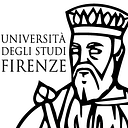Between interpretations and rules. (More) Reflections on restoration theory
From Firenze University Press Journal: Restauro Archeologico
Susanna Caccia Gherardini, Dipartimento di Architettura, Università degli Studi di Firenze
In recent years, much has changed on the ever-expanding horizon that defines the sky of restoration. The first, and perhaps most difficult to govern, is the dialectic be-tween history as an examination of the sources, which inform the restoration, and “presentism” which is emphasized by the enhancement. The question is whether the tout est present and the tout est patrimoine can coexist, and whether they are irreconcilable or reveal a contradiction that requires a new conception of the space and time of the restoration. If the aim of restoration is to maximize the symbolic value, which can engage architecture in a game of checkers on the table of enrichessement (Boltanski, Esquerre, 2017), this raises the question of what might affect its “historical” legitimacy. Perhaps it can be limited to a tool for narratively enriching the value that an artefact can acquire if it somehow becomes part of a collection, to then perhaps em-body an “image” to be expended on the globalised tourism market. In that case it would no longer be necessary to speak only of a Poverty of Theory (Thompson, 1978), but of its reduction to the certainly central element of a narrative that legitimises a theory of values that is apparently entirely symbolic, and in fact for the most part chiefly mercantile.If we do not accept the almost ontological reduction of what is produced by a restoration to goods that can be collected, the question then becomes what can a restoration work transmit other than a testimony, which must be the very reason for its existence (Collet, 2007).
The cognitive and operative sequences that lead to the recognition of a heritage often contrast with procedures that, if followed, would ensure the patrimonial value and social and/or cognitive processes sometimes shared and sometimes challenged by that recognition. What comes into play, especially in restoration, is the role of the instability of the values that should be transmitted (Prigogine, Stengers, 1998), so the use of protocols seems to be a remedy capable of ensuring both the authority of those who intervene and the ordinariness of the work carried out (Olmo, 2020).When patrimonialisation translates cognitive plots into worksite practices an alteration of the “fact” occurs, as well as possible a juxtaposition between hermeneutical integrity (sometimes abused by patrimonialisation) and methodical integrity safe-guarded by inventories, dictionaries and legislation, which fill the shelves of libraries and professional studios. Ultimately, perhaps no human activity is focused on the paradoxes that come with patrimonialisation, such as restoration. A material trace (a place of worship, a factory, a service station, but also a garden or terrace) undergoes a metamorphosis and becomes a monument when a policy, in Europe at least, invests it with the issue of identity (local, national if not universal). This happened, not with-out creating another paradox, in the early 19th century, for example, when the same name, Gothic, was given to two different and conflicting temporalities, as occurred be-tween Great Britain and France. The transition from a revival to an adventure des mots, even measured by attention to and the translation of key words in the restoration language, is very short.So today, restoration should define what it actually deals with. In an attempt to outline a theory, this transition, as mentioned, is fundamental. The first answer still derives from a now forgotten Dewey: empirical evidence is what guides the restoration work (Cerutti, Pomata, 2008)!
This is the basis for establishing legitimacy that can then be validated by documents and archives. At this point, however, there are too many instances where the document replaces evidence that would be provided by the work (Caccia Gherardini, 2017) and instead it is documents that question the work and define its genealogy. This is the philological drift that so excited restoration theorists early on.Resuming the discussion of what actually occurs during restoration work, of how and who constructs it, given that it is a social production, and of how three forms of interpretation — cognitive, decisive, creative (Pino, 2013) — coexist in each action that shapes an existing work, becomes the true shroud of Penelope. First of all, as there is more than one Penelope weaving the shroud, the actions and actors (roles and rules), and not just principles and values, must be placed back at the centre of theoretical reflection4.Restoration is embodied in a project and is therefore both an intentional act and an expression of collective conventions, and not a mere artistic intention in its broadest sense but a continuous negotiation between interpretations (and subjective responsibility) and rules (dictated by the societies in which the restoration takes place): a form of informal negotiation, which knows no protocols5. This is why, when it comes to restoration projects, the issue of interpretations and decisions in uncertain conditions arises time and again (Coretto, 2002).
DOI: https://doi.org/10.36253/rar-13410
Read Full Text: https://oaj.fupress.net/index.php/ra/article/view/13410
